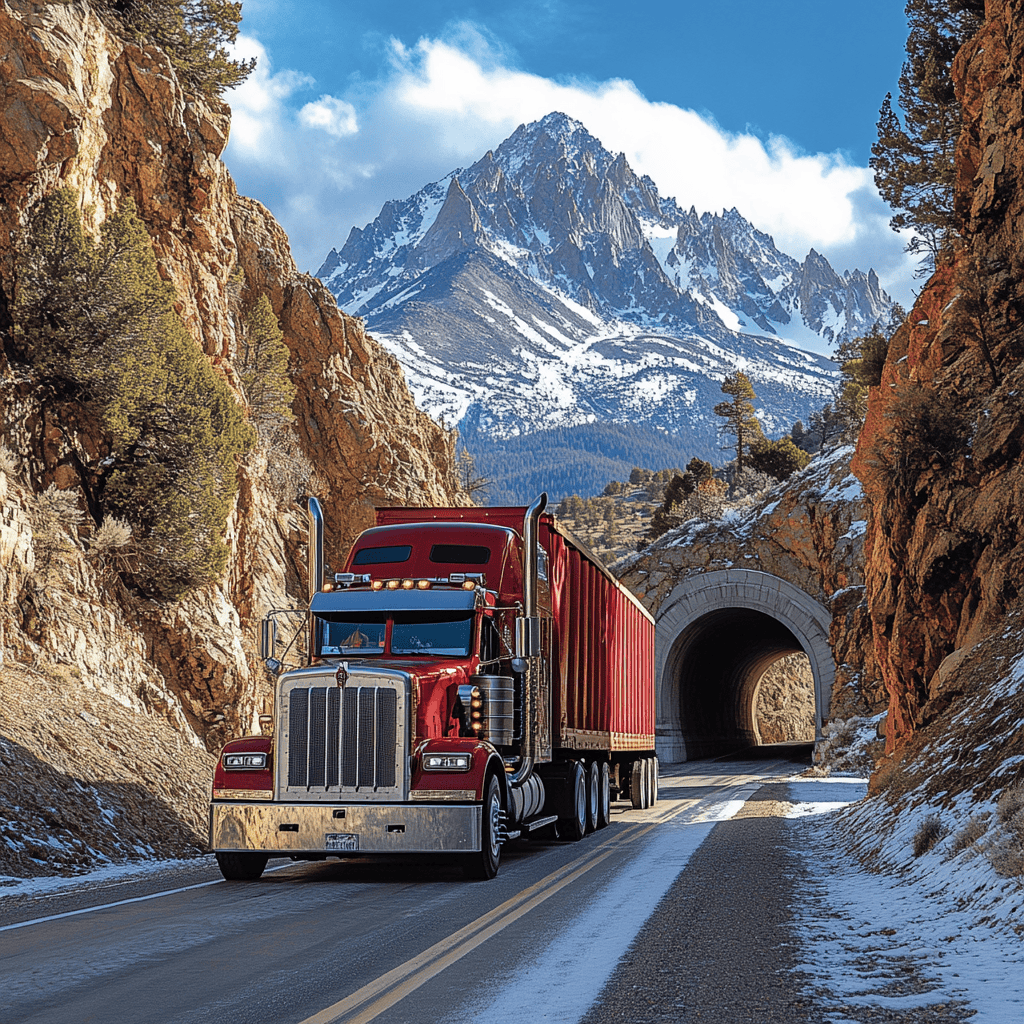Indiana Bridge Law
Freedom Heavy Haul can offer expedited Pickup and Delivery for any size shipment anywhere in the USA. Contact us today for No Hassle, No Pressure Pricing.
The Indiana Bridge Law is a crucial set of regulations designed to manage the weight and size of vehicles traveling over bridges in the state. These laws help protect the structural integrity of bridges, ensure public safety, and facilitate efficient transportation. This in-depth article will explore the core components of the Indiana Bridge Law, its permitting process, enforcement mechanisms, and the importance of regular bridge inspections and maintenance.
Indiana Bridge Law and Weight Limits
Weight limits are fundamental to the Indiana Bridge Law, as they prevent damage to bridge structures from overweight vehicles.

Gross Vehicle Weight (GVW)
One of the primary components of the Indiana Bridge Law is the regulation of Gross Vehicle Weight (GVW). GVW refers to the total weight of a vehicle, including its cargo. Indiana adheres to federal guidelines, which typically set a maximum GVW of 80,000 pounds for standard five-axle trucks. However, specific bridges may have lower weight limits to protect their structural integrity.
Axle Weight
In addition to GVW, the law also regulates the weight borne by individual axles. This is crucial because the weight distribution across axles impacts the stress exerted on bridge components. The Indiana Bridge Law follows the federal Bridge Formula, which calculates allowable weight based on the number of axles and the distance between them. This formula ensures that weight is distributed in a way that minimizes damage to the bridge structure.
Bridge Formula
The Bridge Formula is a critical tool used to determine the maximum allowable weight for vehicles with different axle configurations. It helps ensure that weight is distributed evenly, reducing the risk of concentrated loads that could damage bridge components. For example, a vehicle with more axles spaced further apart can carry more weight than one with fewer axles close together.
Size Limits
The Indiana Bridge Law sets specific size limits for vehicles to ensure they can safely navigate bridges without causing damage or posing safety risks.

Width, Height, and Length Restrictions
The Indiana Bridge Law sets specific size limits for vehicles to ensure they can safely navigate bridges. These limits typically include:
- Width: Maximum width of 8.5 feet.
- Height: Maximum height of 13.5 to 14 feet.
- Length: Varies by vehicle type, with specific restrictions for certain combinations, such as double trailers.
These size limits are designed to prevent oversized vehicles from causing structural damage or creating safety hazards.
Permitting Process
When vehicles exceed standard weight or size limits, they must obtain special permits to travel legally on Indiana’s bridges.
Oversize/Overweight Permits
When vehicles exceed standard weight or size limits, they must obtain special permits. These permits ensure that the movement of oversize or overweight vehicles is managed in a way that protects infrastructure and public safety. There are two main types of permits:
- Single Trip Permits: Issued for one-time travel of oversize or overweight vehicles.
- Annual Permits: Issued for vehicles that frequently travel with oversize or overweight loads.
Application Process
To obtain a permit, applicants must provide detailed information about the vehicle, its load, and the intended route. This information helps authorities assess the potential impact on bridges and determine whether any special measures are needed to accommodate the vehicle safely.
Enforcement and Penalties
The Indiana Bridge Law includes strict enforcement measures to ensure compliance and protect bridge infrastructure.

Weigh Stations and Mobile Units
The Indiana Bridge Law is enforced through a combination of fixed and mobile inspection points. Weigh stations are strategically located to check vehicle compliance with weight limits. Additionally, mobile inspection units can stop and inspect vehicles on the road, ensuring that all vehicles comply with the law, even if they do not pass through a weigh station.
Fines and Penalties
Violations of the Indiana Bridge Law can result in significant fines and penalties. These measures are designed to deter non-compliance and ensure that vehicles adhere to weight and size limits. Penalties may include fines, restrictions on future travel, and requirements to offload excess weight.
Bridge Inspections and Maintenance
Regular inspections and maintenance are essential to ensuring the safety and longevity of Indiana’s bridges.
Inspection Schedules
Regular inspections are a critical component of the Indiana Bridge Law. These inspections ensure that bridges remain safe for public use and can withstand the stresses imposed by traffic. Indiana follows a rigorous inspection schedule, with more frequent inspections for older or more heavily trafficked bridges.
Maintenance Programs
In addition to inspections, ongoing maintenance is essential to preserving bridge integrity. Maintenance programs address issues such as wear and tear, damage from overweight vehicles, and environmental factors. By keeping bridges in good condition, Indiana can extend their lifespan and prevent costly repairs or replacements.
Examples and Evidence
Real-world examples and statistical evidence highlight the importance of the Indiana Bridge Law in maintaining bridge safety and integrity.
I-35W Bridge Collapse
The collapse of the I-35W Mississippi River bridge in Minnesota in 2007 underscores the importance of strict weight regulations and regular inspections. Following this tragic event, states including Indiana have strengthened their bridge laws and inspection protocols to prevent similar incidents.
Federal Highway Administration Data
Data from the Federal Highway Administration (FHWA) highlights the effectiveness of weight limits and inspections in reducing the risk of bridge failures. Strict enforcement of these regulations has been shown to significantly extend the lifespan of bridges and reduce the incidence of structural damage.
Conclusion
The Indiana Bridge Law is a comprehensive framework designed to protect bridge infrastructure and ensure public safety. By regulating vehicle weight and size, enforcing compliance, and maintaining rigorous inspection schedules, Indiana can sustain its transportation network and prevent costly damage. This law exemplifies the balance between facilitating commerce and preserving critical infrastructure. The continued enforcement and refinement of these regulations are essential for the safety and efficiency of Indiana’s transportation system.







